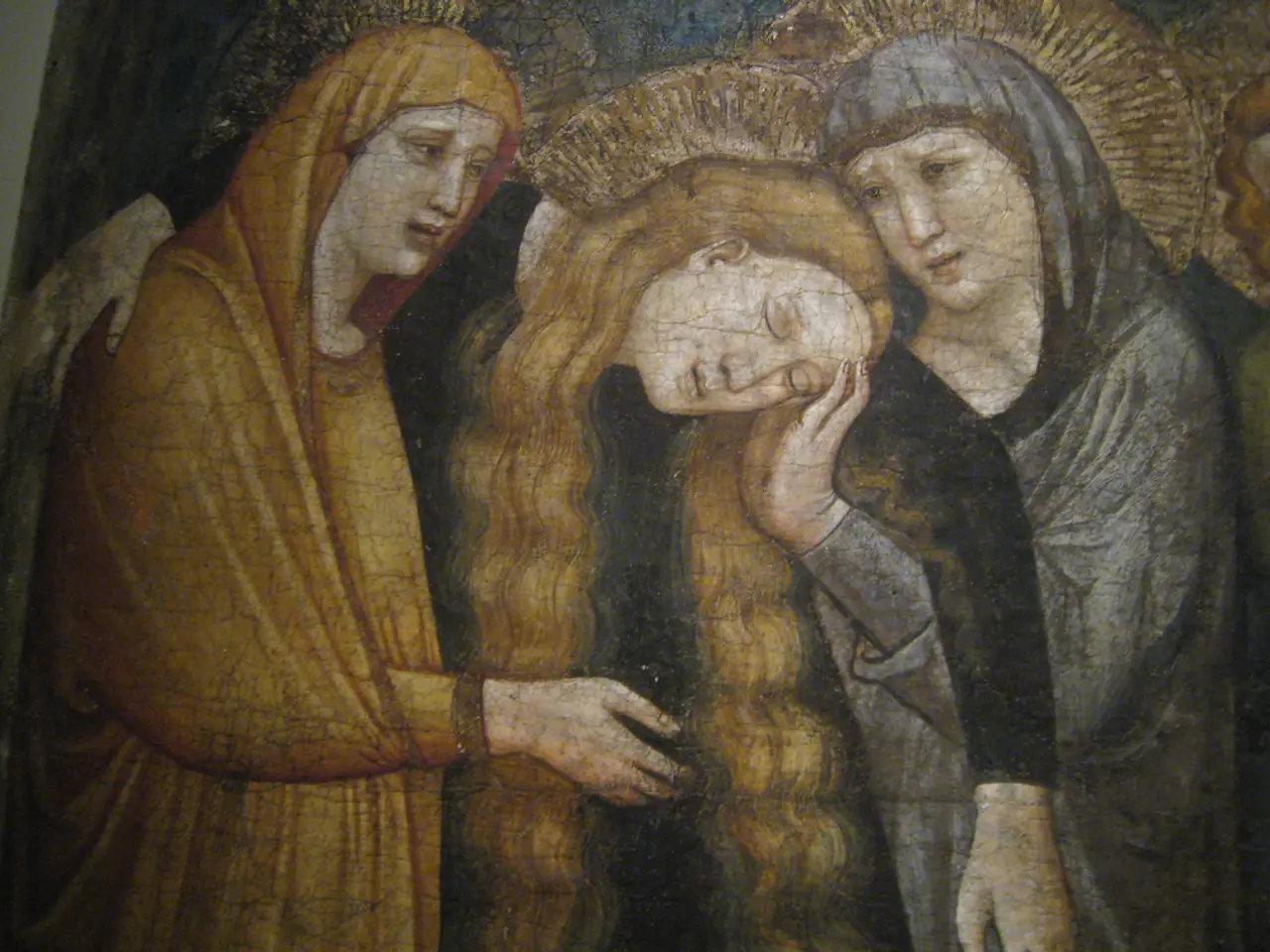Impact of Art and Aesthetics on the Brain and Cognitive Processes
In the realm of human culture, art and beauty have held a significant place since our earliest days. Our appreciation for beauty, particularly in nature, might have guided our ancestors towards resource-rich environments, according to some evolutionary theorists.
Fast forward to the modern era, and neuroscientists at the University of California, San Francisco, are offering intriguing explanations for the enigmatic smile of Leonardo da Vinci's "Mona Lisa." The unique way our visual system processes low and high spatial frequencies could create the illusion of the changing smile.
Art and beauty impact cognitive functions by captivating attention, affecting memory, and inspiring creative problem-solving. The activation of the brain's salience network, a group of regions that help us detect and focus on significant stimuli, is linked to art and beauty captivating our attention.
Engaging with art and beauty can significantly enrich our cognitive and emotional lives. Brain scans have revealed increased activity in the unaffected side of the brain, suggesting that art therapy might stimulate compensatory processes. This has led to art therapy becoming an increasingly recognized treatment approach for various neurological disorders, including stroke, traumatic brain injury, and dementia.
Cultural factors, personal experiences, and individual preferences also play a significant role in shaping perceptions of beauty. The development of neuroaesthetics in recent years has seen significant growth, focusing on understanding the neural basis of aesthetic experiences through advanced brain imaging and interdisciplinary approaches linking neuroscience, psychology, and art theory.
The attention, memory, and problem-solving processes stimulated by art and beauty can enhance our intellectual abilities and foster lifelong learning. Art and beauty can inspire creative problem-solving and innovative thinking by encouraging us to view things from different perspectives and think outside the box.
Moreover, art and beauty can inspire emotional well-being. Aesthetic experiences can trigger a range of positive emotions, contributing to our emotional health. The aesthetic engagement can stimulate the brain's default mode network, associated with mind-wandering, imagination, and future planning, potentially sparking creativity and innovation.
Our ability to create and appreciate art could have fostered social cohesion, communication, and the transmission of knowledge, helping human communities to thrive. Certain aspects of facial beauty, such as symmetry and proportion, are universally recognized, suggesting a shared human aesthetic sensibility.
However, the universality versus relativity debate in perceived beauty is ongoing in the field of aesthetics and neuroaesthetics. The creation of art has been shown to improve memory and cognitive abilities. A memorable artwork or a beautiful scene can etch itself into our long-term memory, often because it sparks strong emotional responses.
In conclusion, art and beauty, rooted in our evolutionary past, continue to play a pivotal role in our lives, shaping cultures, enhancing cognitive and emotional well-being, and fostering social cohesion. The ongoing research in neuroaesthetics promises to deepen our understanding of this fascinating interplay between art, beauty, and the human brain.
Read also:
- Understanding Hemorrhagic Gastroenteritis: Key Facts
- Stopping Osteoporosis Treatment: Timeline Considerations
- Tobacco industry's suggested changes on a legislative modification are disregarded by health journalists
- Expanded Community Health Involvement by CK Birla Hospitals, Jaipur, Maintained Through Consistent Outreach Programs Across Rajasthan








